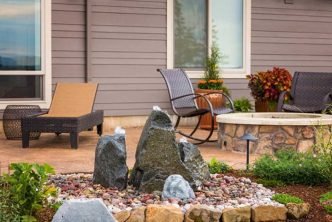Every piece on a hunting rifle has its importance. As such, it is always essential to ensure that the parts are of good quality.
This article will discuss what makes a high-quality rifle scope and the benefits of having one.
Table of Contents
What makes a good scope?
The first answer is that it is durable. The build quality is solid enough to bring to trips and can handle any environment and weather condition.
You’ll be in the wilderness during your hunts, and anything can happen. Of course, it is important to be careful and ensure that your equipment doesn’t break down. However, knowing that your equipment will last outside is a plus.
Magnification
Magnification is what makes a scope such a valuable piece of gear for hunters. The ability to view otherwise far distances much closer and more clearly will do you wonders.
Not only do they help you see far away, but it also narrows it to a specific area. This helps with your aim as you zero in solely on the target and nothing else.
Scopes usually come in two types, fixed and variable.
The two types speak for themselves. Fixed only has one magnification level. Variable has the advantage of being adjustable, making it great for different angles and situations.
Good Objective Lens
The objective lens is responsible for clarity and brightness. They are located at the other end of the scope.
A good lens will give you clarity in what you are viewing. When you pair that with magnification, you will be able to see far distances properly.
Another thing that is discussed with objective lenses is the lens coating. This is the coating that is put on the lens.
This helps with the light transmission which can come in handy with viewing.
Scope Reticle
Reticles are the crosshairs you see when you look into a scope.
Reticles come in different appearances. The three common ones are the duplex, mil-dot, and the bdc.
For hunting, the best one to go for is the duplex. This is the most common one and the one you usually associate the most with reticles.
Even though it is the most basic, it is the most reliable for hunting.
The Advantages of High-Quality
Now that you know the parts of a scope and what to look out for when it comes to quality, here are some advantages.
Longer Range
This shouldn’t come as a surprise now that you know what goes into a scope.
Having a longer range will make things much easier for you with hunting. You probably don’t want to risk getting closer to your targets. This might startle them and cause them to run away, making your hunt difficult.
Having a longer range won’t call for you to move closer. You can now keep your distance without compromising your aim.

Distance
This is related to the previous point.
The hunting ground can be unpredictable in the layout. There could be a hole between you and the target or a river that will make noise when you cross it, losing all your sneak points.
Keeping your distance when hunting will be beneficial in getting as many targets as you can without compromising aim and precision.
Funny enough, this also leads into the next point.
Better Accuracy
Precision and accuracy are the names of the game when it comes to hunting.
This is something you practice regardless of having a scope or not. But with a scope, your aim should improve quite a lot.
Accuracy can feel relative, and its results can depend on a number of factors. The best part about a scope is that it can help compensate for those off days by providing an extra pair of eyes and assurance to the wielder.
Having an improvement in your accuracy is definitely a plus, and a scope can help you get there.
Frequently Asked Questions
Fixed or variable?
Both are good choices so long as the scope is of high quality.
Fixed scopes will give the best magnification for a specific angle. So long as you stick to the same angle, you will be able to deliver precise shots.
On the other hand, variable scopes are more adept with different angles and positions. This makes it ideal for areas that have different layouts.
This will all depend on your preference.
How much size/diameter for the objective lens?
The size/diameter of the objective lens will depend on the type of hunt you are planning to do.
28mm and below is a good range for daytime hunting and hunting in close range. You will need around 30-44mm if you plan to hunt in low-light areas or at night.
However, it is recommended to go for lenses that are specifically good for night hunting.
How much eye relief do you need?
Eye relief is the distance between the scope and your eye. The best distance is around 3.5-4 inches, though a further distance is also recommended should the rifle’s shooting power pack a punch.
Maintain a proper ratio of keeping your eye far enough from the scope while still being able to see the zoomed-in image.
How much should I spend on these?
One thing you should consider is that a bigger price tag doesn’t always equate to better quality.
The quality and build should be your focus. There are good quality scopes with affordable prices. If that’s the case, then go for those. You’ll be getting high-quality scopes while saving some extra cash.
Another tip for those starting out is to buy mini versions of high-quality scopes.
What kind of coating should I go for?
There are four kinds of coating you can try out for the lenses. These are coated, fully coated, multicoated, and fully multicoated.
You don’t have to worry about choosing which one as they won’t make that much of a difference with the aim.
Conclusion
Quality is something that you should think about when going into anything. In this case, high-quality scopes will get you the best results because you don’t have to worry about it breaking down every so often.
We hope this article helps you find a high-quality scope for your next trip.





